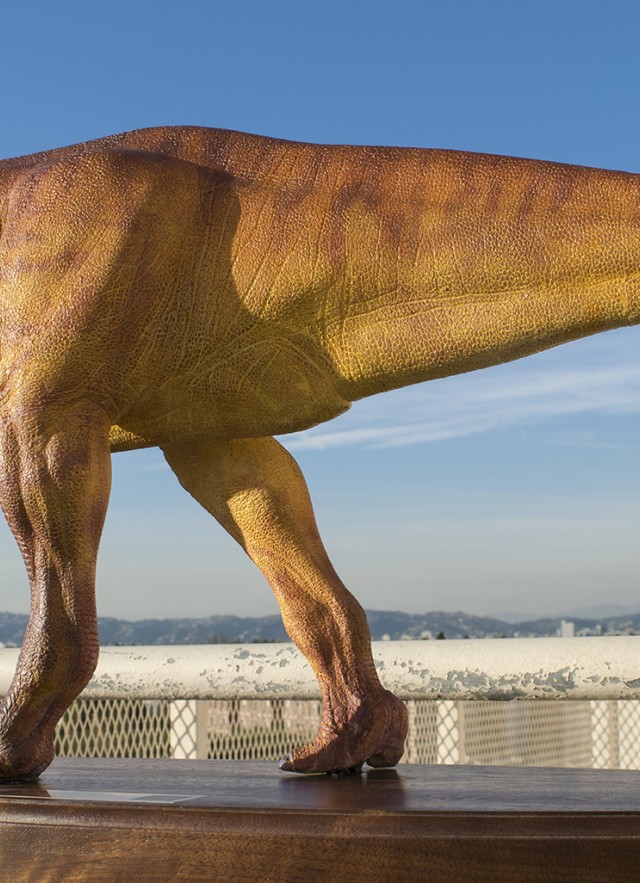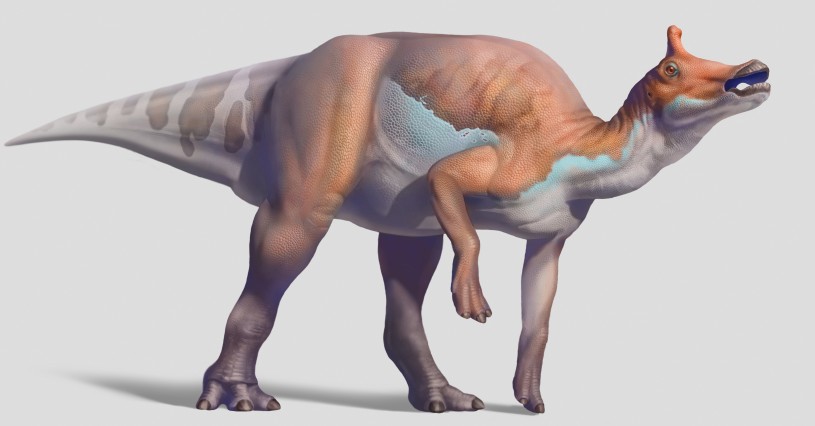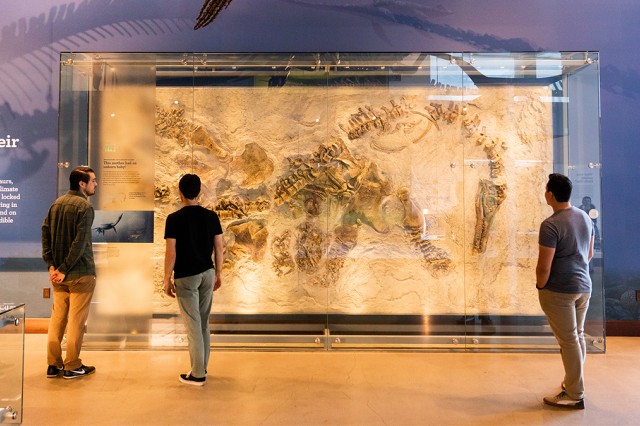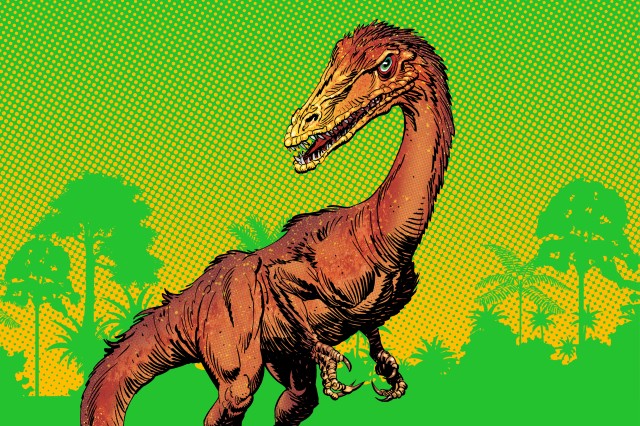Dino-mite! We Struck Gold
Meet Augustynolophus morrisi—Auggie, for short—California's official state dinosaur!

Move over golden poppy and grizzly bear, and make room for another gawk-worthy state emblem.
This duck· billed hadrosaur stomped around these parts 66 million years ago near what is now central California, and is now the official California state dinosaur. About as long as a school bus, these dinosaurs probably browsed the landscape for trees and small plants, using their broad teeth, perfect instruments for grinding chewy leaves. Though Augustynolophus lived on land, some were swept out to sea after they died, eventually settling to the bottom of the ocean, which covered much of ancient California.

Illustration by Stephanie Abramowicz
What a Genus
Encased in layers of sediment for eons, Augustynolophus remains were uncovered by a team from the California Institute of Technology starting in 1939. At that time, the fossils were classified as Saurolophus, a type of hadrosaur first discovered in 1912. But years later, a team that included NHMLAC's Dinosaur Institute Director Dr. Luis Chiappe, determined upon closer examination that this dinosaur was unique and deserving of its own distinct genus. It was reclassified and given a new name: Augustynolophus morrisi, honoring two notable Californians, Dr. William J. Morris and Gretchen Augustyn. Dr. Morris was a geologist and paleontologist who was responsible for many of the dinosaur discoveries along the western coast of North America. Augustyn is a longtime supporter of the Museum's scientific and educational programs.
Today, the only two known fossil specimens


